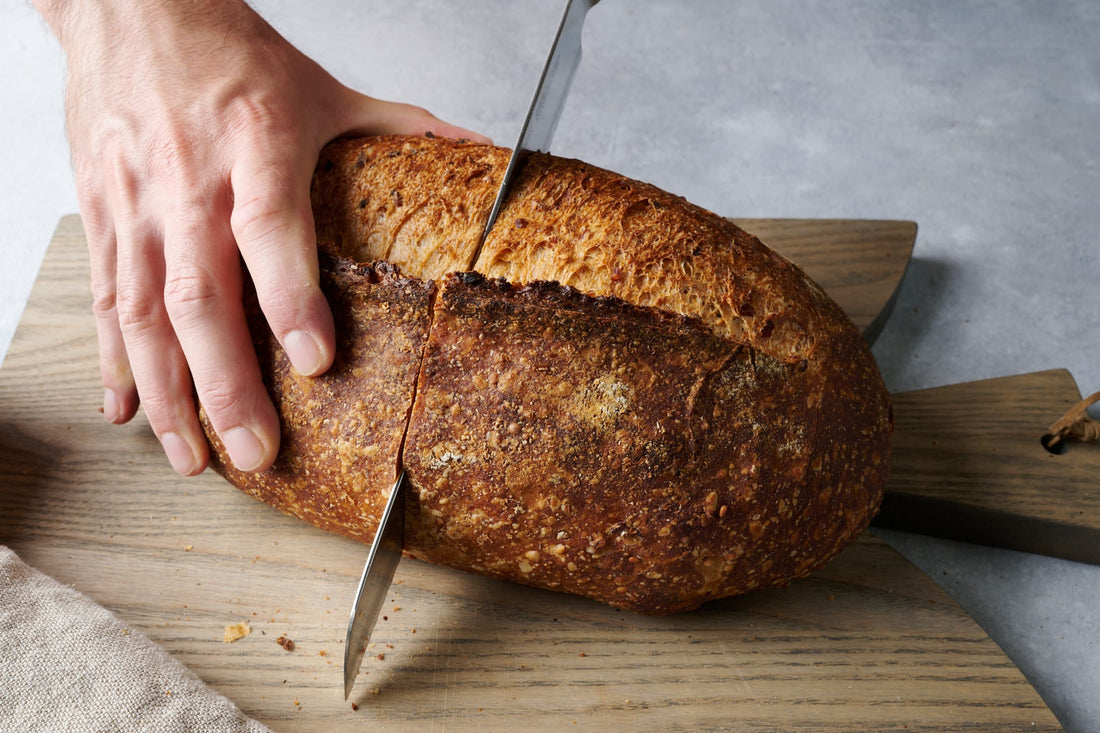How to sharpen a chef knife with a stone - BBQ Enthusiasts Guide
Written By Avi Green
A sharp knife is every BBQ enthusiast's best friend. But maintaining the edge of your chef knife can seem daunting if you don't know where to start. Luckily, **sharpening a chef knife with a stone** can be done with just a bit of practice and the right guidance.
Whether you're a home cook or a grilling guru, knowing the art of knife sharpening can elevate your BBQ experience. From smoother, effortless cuts of meat, vegetables, and more, a sharp knife is essential. This guide will walk you through the process of honing your skills with a whetstone.

1. Why Sharpen Your Knife?
Barbecue enthusiasts know that preparing ingredients with precision is key to cooking a perfect meal. A dull knife not only makes cooking tedious but also increases the risk of accidents in the kitchen. Regularly sharpening your knife ensures safety, efficiency, and enjoyment, providing you the exact control you need when slicing that perfect brisket.
2. Selecting the Right Stone
When it comes to choosing a sharpening stone, options abound. The most common types are whetstones, water stones, and oil stones. For beginners, a double-sided whetstone with a grit combination, such as 1000/6000, is highly recommended. This lets you both sharpen and polish your blade.
Before you sharpen your knife, soak the stone if it's a water stone or add oil if its an oil stone. A properly lubricated stone will provide the perfect sharpening surface.
3. Preparing to Sharpen
Secure the stone on a stable surface. Some stones come with a base to prevent movement, but a damp cloth can also be used to stabilize the stone. Hold the knife at an approximately 20-degree angle to the stone, as achieving the correct angle is crucial to creating an ideal edge.
4. Sharpening Technique: Step-by-Step
Beginners should follow a systematic approach to draw out the perfect edge:
4.1 Establish the Initial Angle
For those wondering how to sharpen a chef knife with a stone proficiently, start by placing the heel of the knife against the stone in the correct position, using gentle pressure. Maintain a consistent angle to ensure an evenly sharp edge.
4.2 Use the Coarse Side First
Begin with the coarse side of your whetstone to create a new edge. Use smooth and controlled strokes, pulling the blade down and across the stone, from the heel to the tip. Repeat this process for about 10 strokes, then switch to the other side of the blade.
4.3 Flip to the Fine Side
Once the edge is formed, flip the stone to the fine side. This step helps in honing and refining the edge, making it razor-sharp. Use the same stroke pattern as before, ensuring each side of the blade gets equal attention.
4.4 Test the Sharpness
After sharpening, test the sharpness of your knife with a simple paper slice test or lightly running your finger (cautiously) across the blade's edge. If need be, repeat the process for further improvement.
5. Maintaining Your Chef Knife
Once you've achieved a sharp edge, maintaining your knife's sharpness should be a regular practice. Use a honing steel between uses to keep the edge aligned and prolong the sharpness. This can dramatically reduce the frequency of needing a full sharpening session.
For more strategies on how to store knives to avoid dulling them prematurely, check out this insightful post.
FAQs on Knife Sharpening
What Grit Should I Use First?
Start with a coarse grit, such as 1000, to shape the edge, then move to finer grits for polishing.
How Often Should I Sharpen My Knife?
This depends on how often you use it. Typically, once every few months if you regularly hone the edge.
Can I Damage My Knife with a Stone?
If sharpening is done incorrectly, you can damage the edge, but with patience and practice, it can be safely mastered.
For further insights into knife sharpening, you might find valuable tips in our guide on choosing the right knife for your culinary needs.

Embrace the Edge
Sharpening a chef knife with a stone is more than just maintenance; it's an essential skill for any grilling stalwart. Mastering it will transform your cooking experience, giving you the confidence to tackle any culinary challenge with ease and precision.
For additional kitchen safety tips and guidance on treating minor cuts, ensure you are always prepared in the kitchen.



